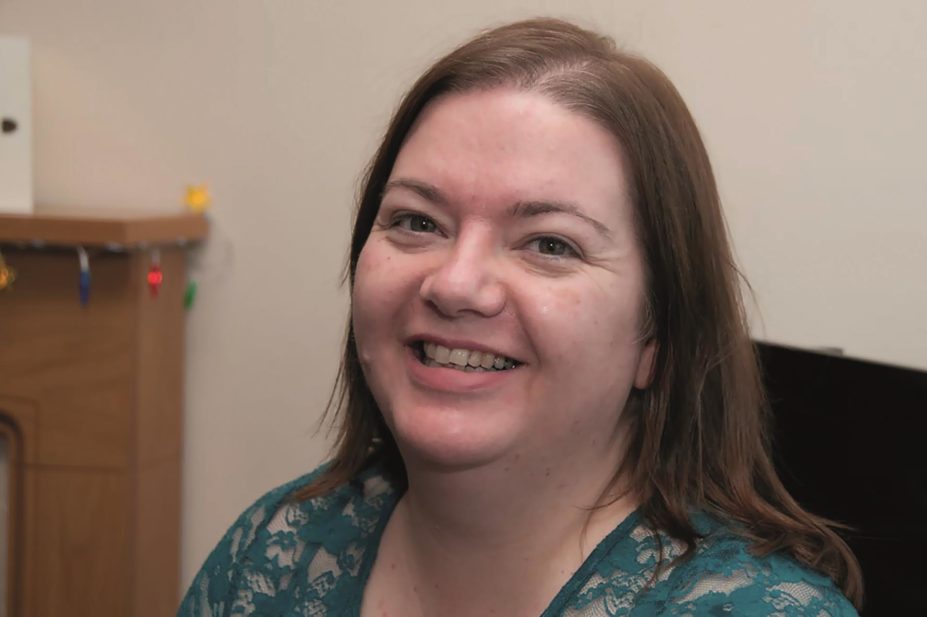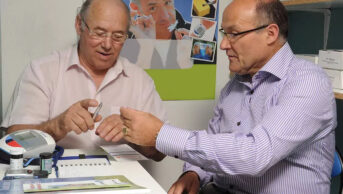
How did you get to your current role?
I am currently an advanced pharmacist in addictions. I have two part-time roles, one in NHS Lanarkshire and one in NHS Greater Glasgow and Clyde.
In 2006, I was part of the second ever cohort of pharmacists who completed a supplementary prescribing qualification. Supplementary prescribing is a voluntary partnership between a doctor or dentist and a supplementary prescriber, who can prescribe medicines within an agreed patient-specific clinical management plan with the patient’s agreement.
I began running clinics in local pharmacies in 2006 while still working in community pharmacy until I took on clinics full time in 2012.
Why did you decide to pursue a career in addiction pharmacy?
When I was practising and studying for the supplementary prescribing certificate, I recognised the helpful contribution that pharmacists could make to the wider addiction team. I became involved in answering questions about drug-drug interactions and appropriate co-prescribing with methadone and Suboxone (naloxone hydrochloride dihydrate and buprenorphine hydrochloride). I also recognised that the skills I had acquired as a pharmacist equipped me to work with patients with addictions. Particularly, as patients with addictions age, they develop age-related illnesses that, as a community pharmacist, I am able to recognise and then signpost patients to appropriate help.
What do you enjoy most about your work and of which achievement are you most proud?
I enjoy working with a variety of patients and dealing with new experiences and challenges every day. There are a number of patients in the addictions service who have never had a problem with heroin but have had opioid analgesic dependence. We have identified these patients by doing an audit of what drug patients were addicted to initially, before they began opiate replacement therapy. This presents challenges because the service model is not tailor-made for these patients but we still want to provide excellent care.
I am most proud of the fact that I acquired the skills to help this group of people, who often face prejudice in society. I have challenged myself to see them as individuals with needs, regardless of how they acquired those needs. Dealing with people in the addictions service is about care without preconceptions.
What is the most challenging part of your current role?
There are several challenges specific to working in addictions pharmacy. Firstly, when patients present under the influence of a substance, it can be difficult to know what action to take. For example, if patients are obviously under the influence of alcohol, we have to judge if they are fit to receive their prescriptions. Depending on the circumstances we may ask them to return later in the day.
Additionally, there are occasions when it can be difficult to know whether to trust patients — one individual may provide information that contradicts another individual. For example, if your patient Jean tells you she was using illicit heroin with her friend, John, but John denies using any drugs in the last month. In these situations, I have to decide what, if anything, to do with that information.
I must also stay up to date with all the current services that are available to support patients with addiction. These include family support groups and recovery groups.
What is the best piece of advice you have received during your career?
Early in my career, a doctor told me “there is often more than one right answer to a question”. This advice has been useful in preventing conflict among staff — for example, if another healthcare professional has an idea for a care plan for a patient who is initiating or detoxing from opiate replacement therapy, it may be different to my own idea but equally valuable.
I also found the advice helpful in deciding the best course of action for patients who have been transferred from other areas that have different guidelines, and when I have worked between two health board areas where the guidelines are slightly different, because I can appreciate that both approaches have their merits.


